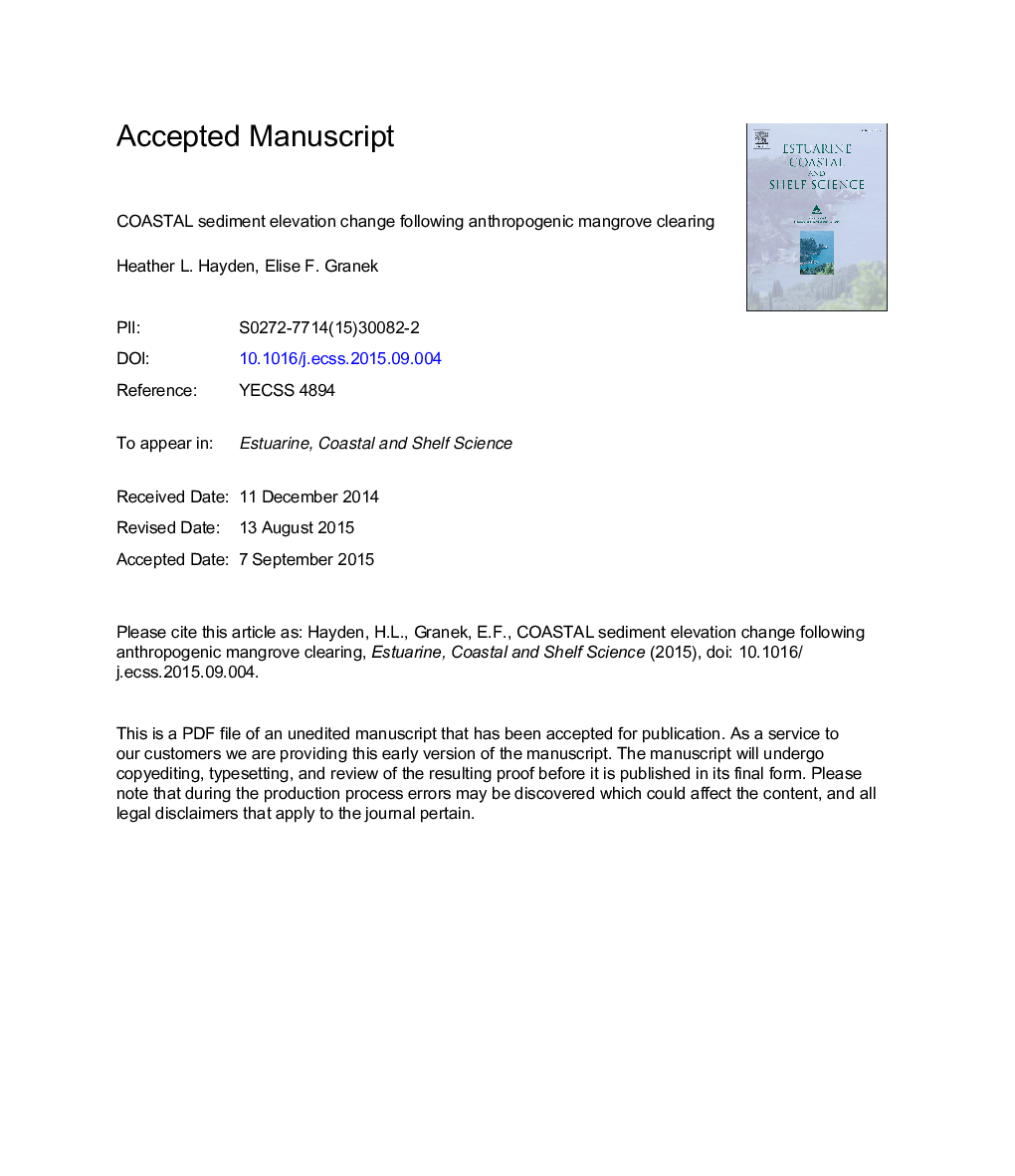| Article ID | Journal | Published Year | Pages | File Type |
|---|---|---|---|---|
| 6384609 | Estuarine, Coastal and Shelf Science | 2015 | 18 Pages |
Abstract
Coastal mangrove forests along tropical shorelines serve as an important interface between land and sea. They provide a physical buffer protecting the coastline from erosion and act as sediment “traps” catching terrestrial sediment, thus preventing smothering of subtidal coral reefs. Coastal development that removes mangrove habitat may impact adjacent nearshore coral reefs through sedimentation and nutrient loading. We examined differences in sediment elevation change between patches of open-coast intact and anthropogenically cleared red mangroves (Rhizophora mangle) on the east side of Turneffe Atoll, Belize, to quantify changes following mangrove clearing. Samples were collected over a 24 month period at five study sites, each containing paired intact (+mangrove) and cleared (-mangrove) plots. Five sediment elevation pins were deployed in each plot: behind areas cleared of mangroves (-mangrove) and behind adjacent intact mangroves (+mangrove). Sediment elevation increased at intact mangrove sites (MÂ =Â +3.83Â mm, SEÂ =Â 0.95) whereas cleared mangrove areas suffered elevation loss (MÂ =Â â7.30Â mm, SEÂ =Â 3.38). Mangroves inshore of partial or continuous gaps in the adjacent fringing reefs had higher rates of elevation loss (MÂ =Â â15.05Â mm) than mangroves inshore of continuous fringing reefs (MÂ =Â â1.90Â mm). Our findings provide information on potential effects of mangrove clearing and the role of offshore habitat characteristics on coastal sediment trapping and maintenance of sediment elevation by mangroves. With implications for coastline capacity to adjust to sea level rise, these findings are relevant to management of coastal fringing mangrove forests across the Caribbean.
Related Topics
Physical Sciences and Engineering
Earth and Planetary Sciences
Geology
Authors
Heather L. Hayden, Elise F. Granek,
